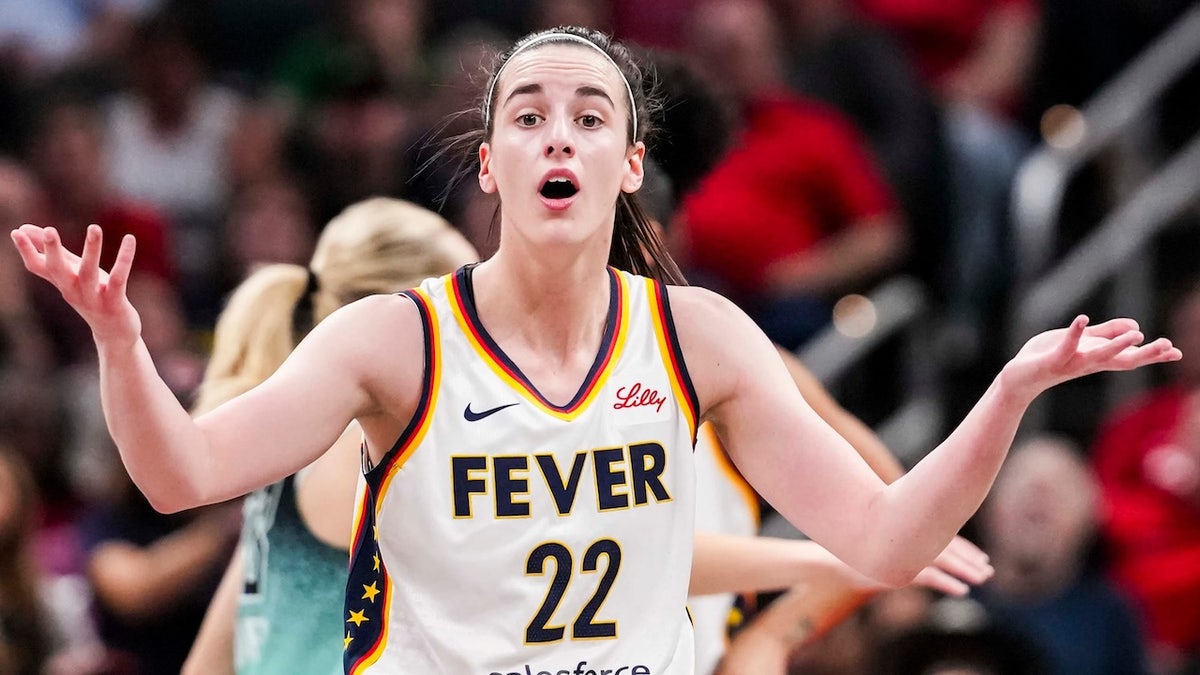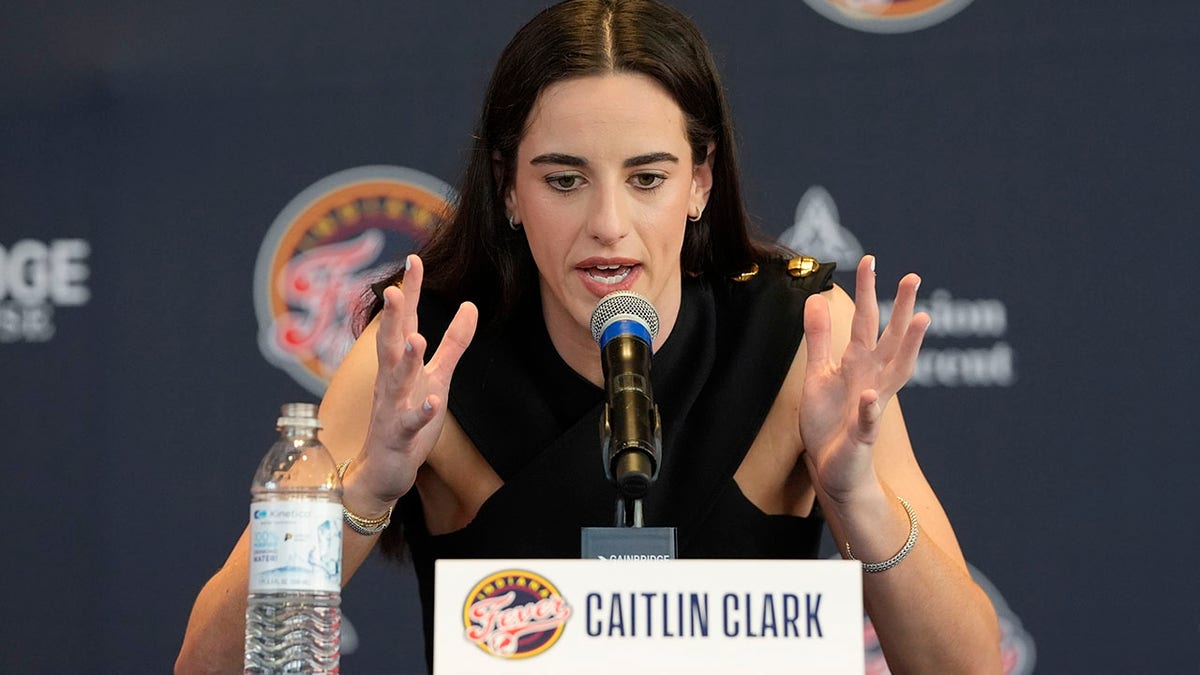“Careful, You’ll Get Fined”: Caitlin Clark and Sydney Colson Ignite Firestorm Over WNBA Officiating
“Careful, You’ll Get Fined”: Caitlin Clark and Sydney Colson Ignite Firestorm Over WNBA Officiating
The WNBA’s late-season drama just spilled beyond the hardwood. After the Indiana Fever edged the Los Angeles Sparks 76–75 on August 29, a wave of frustration over officiating erupted online—led by Fever star Caitlin Clark and veteran guard Sydney Colson. Their posts—and the avalanche of reactions they triggered—have turned a close game into a referendum on whistles, fines, and how the league handles criticism.

The Spark: A One-Point Win, a Five-Minute Final Second
The flashpoint came in the closing moments. Fans fixated on clock resets, timeouts, and physical drives that didn’t produce free throws—particularly for Kelsey Mitchell, who attacked the rim repeatedly but, according to critics, didn’t get a “star’s whistle.” The Fever bench bristled; Lexi Hull drew a technical. Cameras caught Clark visibly exasperated, gesturing and lobbying for calls.
Online, Sydney Colson—recovering from an ACL tear—summed up a growing sentiment: “At a certain point in the league’s existence, I’m going to need Kelsey Mitchell to get the same whistle as other stars… The way she gets assaulted is insane.” Clark quote-replied with a dry, five-word grenade: “Careful, you’re going to get fined.”
That line detonated across social feeds not because it was incendiary, but because it sounded resigned—an acknowledgment of the WNBA’s recent disciplinarian posture toward public criticism of officials.
Fines, Frustrations, and the “Quiet Part” Out Loud

Colson’s tweet wasn’t the only one drawing a line. Clips circulated of contact that Fever players felt went uncalled, a near-five-minute final 1.9 seconds, and a sequence where observers argued a clock/timeout decision disadvantaged Indiana. Many fans and podcasters called the officiating “inconsistent.” Others, more pointedly, alleged bias. (Those claims are unproven; they reflect fan and pundit frustration rather than verified findings.)
What Clark’s quip underscored: there’s a culture of caution around officiating talk. Players like Sophie Cunningham have been fined for posts and podcast comments about refs; coaches, including Stephanie White, have been hit for “egregious” remarks. The message critics hear is simple—air it out, pay it out.
The Kelsey Mitchell Question
Colson’s focal point was Kelsey Mitchell. On a night she lived at the rim, she didn’t live at the line. That gap—aggression versus free-throw volume—fueled the “star treatment” debate. Should Mitchell, one of the league’s most relentless downhill guards, get a whistle commensurate with her rim pressure? Fever fans say yes; skeptics counter that one game (and one whistle crew) doesn’t prove a league-wide pattern.
The Stat That Won’t Go Away
Another accelerant: mentions that Clark has absorbed a disproportionate share of flagrant fouls this season. Whether one cites 17% or a different figure, that stat— repeated widely by fans and commentators—feeds the narrative that physicality against marquee players is sliding past the threshold of acceptable toughness. Again, context matters: sample sizes, play styles, and how fouls are classified all complicate the picture. But the perception has power, and right now it’s driving the discourse.
Social Media Court: Prosecution, Defense, and a Hung Jury
Reactions fractured along familiar lines:
-
Pro-Fever/Pro-Player voices: “Inconsistency is harming the product.” “Protect stars.” “Stop fining truth-tellings.”
-
Skeptical voices: “Late-game chaos happens.” “Contact isn’t always a foul.” “Don’t politicize officiating.”
-
Process reformers: “Create clearer accountability and transparency for refs.” “Improve training and feedback loops.” “Let players critique in good faith without fearing financial penalties.”
What’s notable is how quickly the conversation moved from a game to the system—from freezes of a single sequence to larger questions about the WNBA’s pathways for feedback and its threshold for public criticism.
Where the League Stands—and What Could Change
The WNBA historically protects its officials publicly and disciplines sharp criticism. That’s common across pro leagues. But the WNBA is in a growth spurt—bigger audiences, louder discourse, and broader cultural stakes—especially with the “Clark effect” turbocharging visibility. In that context, even the perception of uneven treatment can metastasize.
Constructive steps the league could consider (without conceding any wrongdoing):
-
Transparent Postgame Reports: Summaries of notable calls/non-calls and clock rulings to build trust with fans and teams.
-
Expanded Points of Clarification: Videoboard or social content explaining tricky rules (e.g., end-game timeouts, clock resets).
-
Protected Feedback Channels: A structured window where players and coaches can submit officiating concerns without fear of fines—provided they do not make public allegations impugning integrity.
-
Officiating Investment: Continued training, evaluation, and public data on crew tendencies and accuracy metrics.
The Stakes for Indiana—and the WNBA
For the Fever, these moments carry more than moral weight. A young core competing for playoff positioning wants a clean runway. For the league, this is a credibility moment: booming interest invites scrutiny. If fans are talking more about whistles than baskets, the product loses oxygen.
And for Clark and Colson? Their voices galvanized attention not only because of their platforms, but because of their tones: Colson’s plain-spoken callout of perceived inequity; Clark’s knowing, barbed aside about fines. One was a push; the other was a mirror.
The Bottom Line
A gripping one-point win became a lightning rod for a bigger argument: consistency, transparency, and how a rising league navigates criticism in public. The Fever felt squeezed by the whistle; the Sparks played to the horn. Fans split into camps, receipts in hand.
But one thing’s undeniable: “Careful, you’re going to get fined” is now a rallying cry—less about rebellion than about reform. If the WNBA can channel this moment into clearer processes and a sturdier trust with its players and viewers, it wins twice: on fairness and on fandom.
Until then, every close whistle in a Fever game won’t just be a call. It’ll be a conversation.






